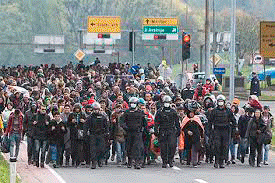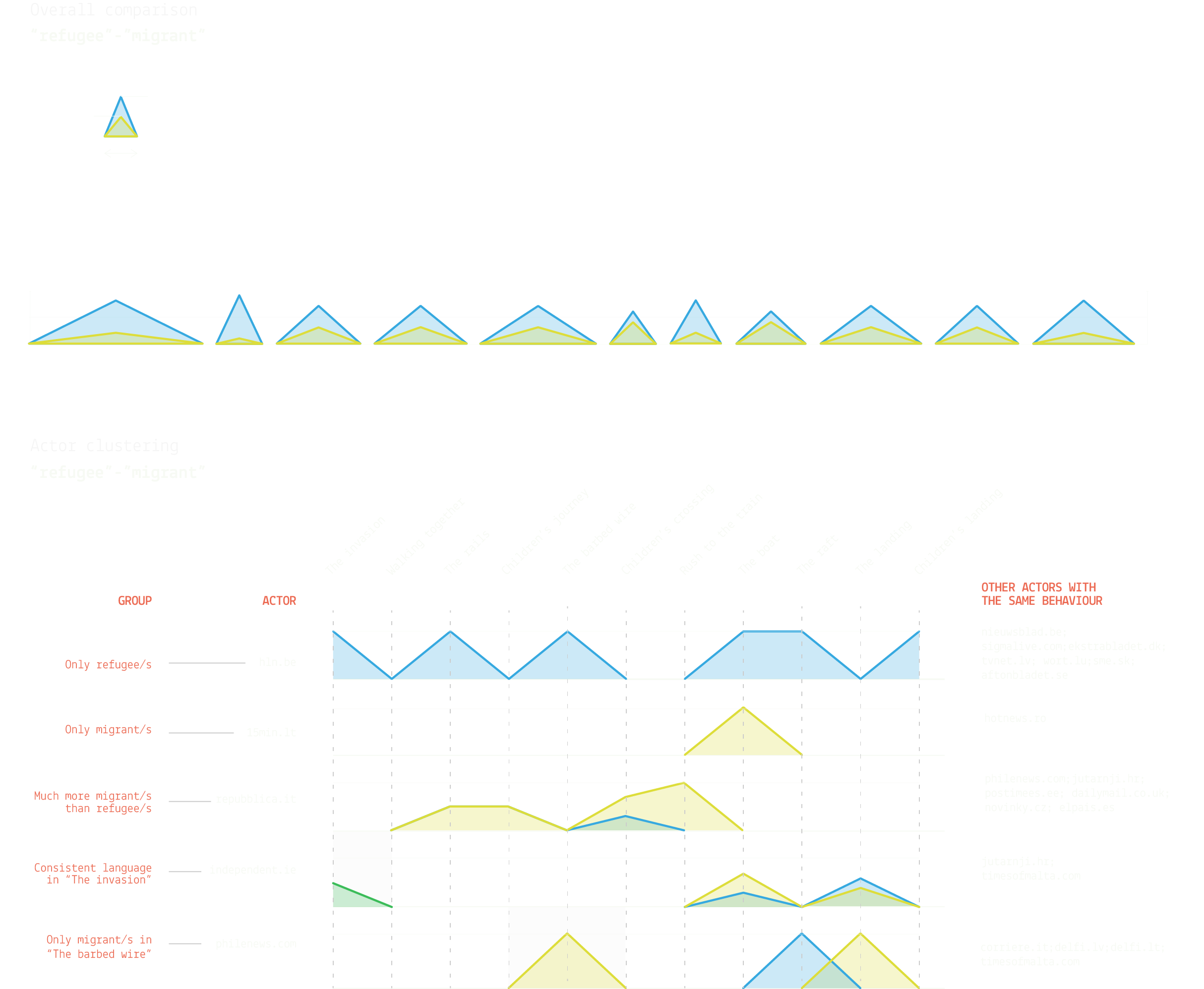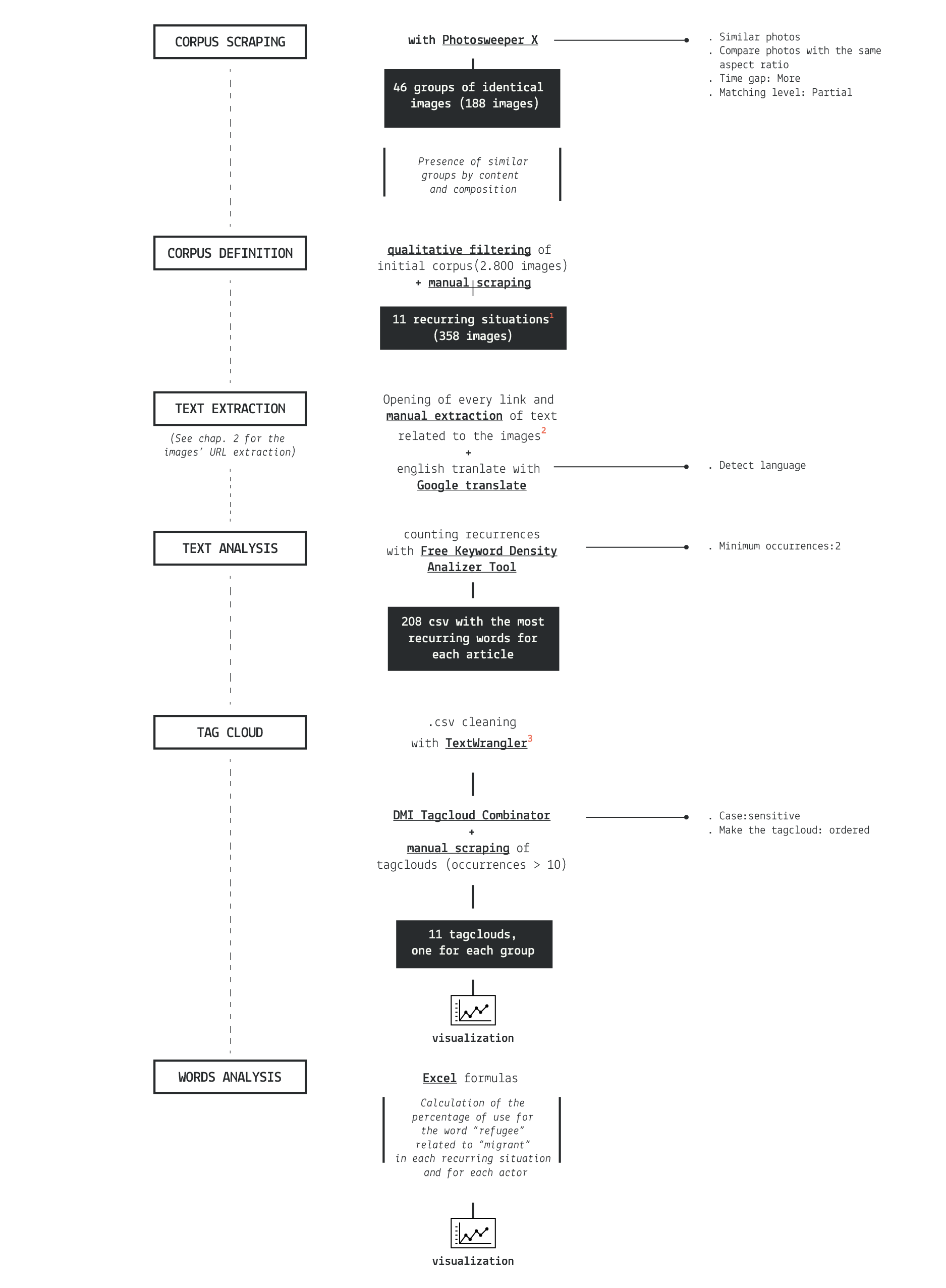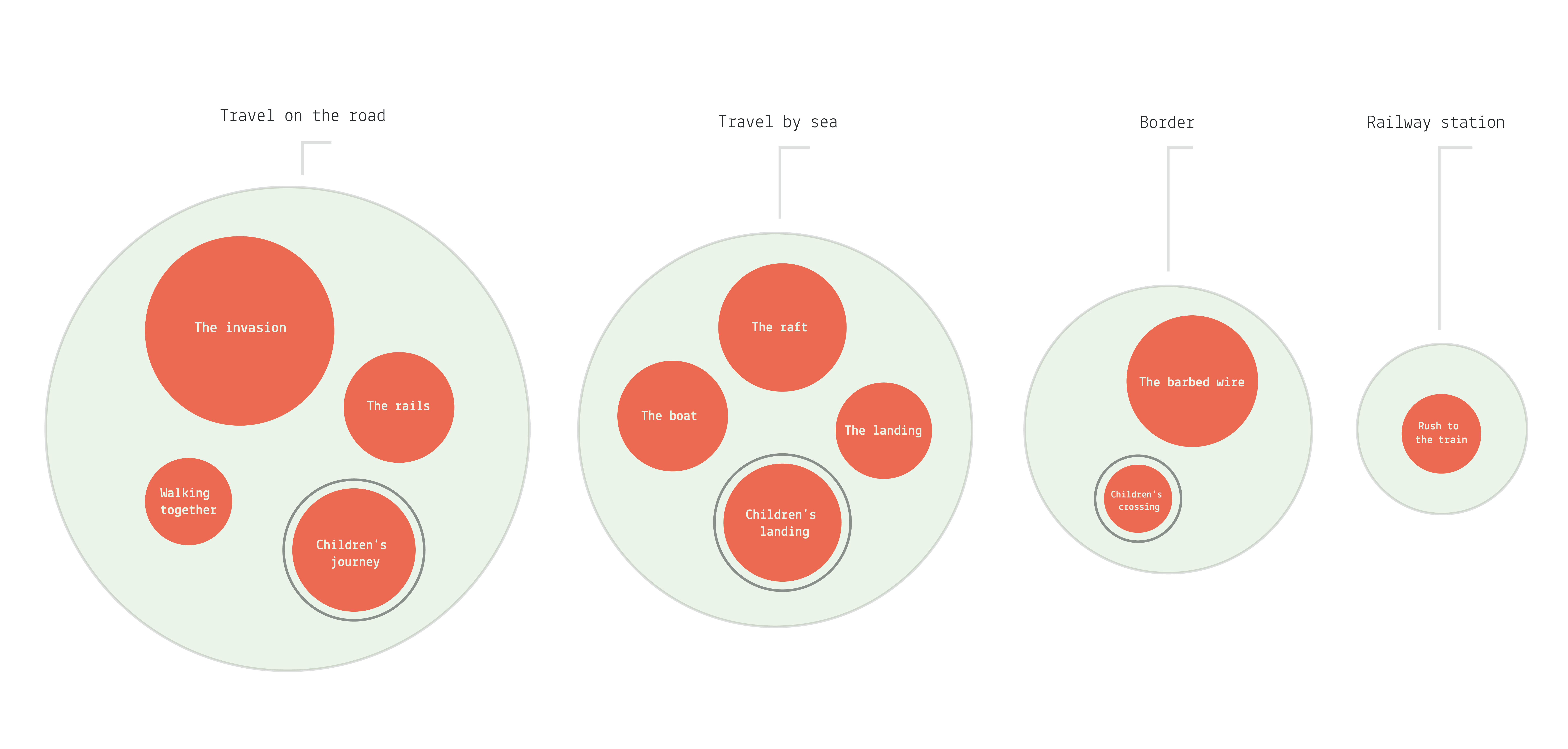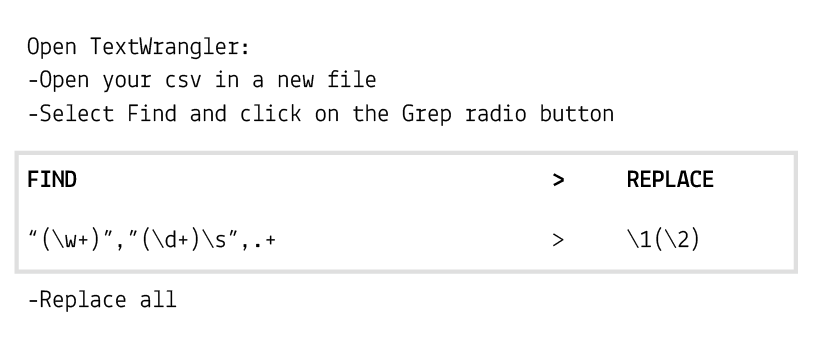Findings
In all the tag clouds, the two terms refugee and migrant emerge among the top positions. In particular, refugee is always the most used word, except in the group "children's crossing", which gives way to the word border. It’s important to notice that this word has a certain relevance in the photos representing the journey, the barbed wired and the train. We also noticed that depending on the situation, different Eu countries appear to be more relevant, in particular: Hungary, Germany and Serbia when it comes to depicting the journey on the road, the border and the use of trains; Greece and Italy when it comes to depicting the journey made by sea. Denmark stands out as a particular case, popping up in second place in the group “walking together".
Looking at the usage of the words refugee and migrant in different groups, we can observe that a lot of actors decided to use only one of the two terms, preferring refugee over migrant in every case except in the group related to the boat. By comparing the total percentage of the 11 groups, we can see that in all cases the word refugee is greater than migrant. The two cases in which the distance between the two terms is minimal are “children's crossing” and “the boat”.
Analyzing the behavior of individual actors we noticed some interesting facts:
- there are actors who only use the word refugee, in particular both news sites from Belgium
- there are fewer actors who only use the word migrant
- some actors use much the word "migrant" than refugee
- in “the invasion" there are actors that use equally the two words
- in "the barbed wire" there are players who use only the word migrant
